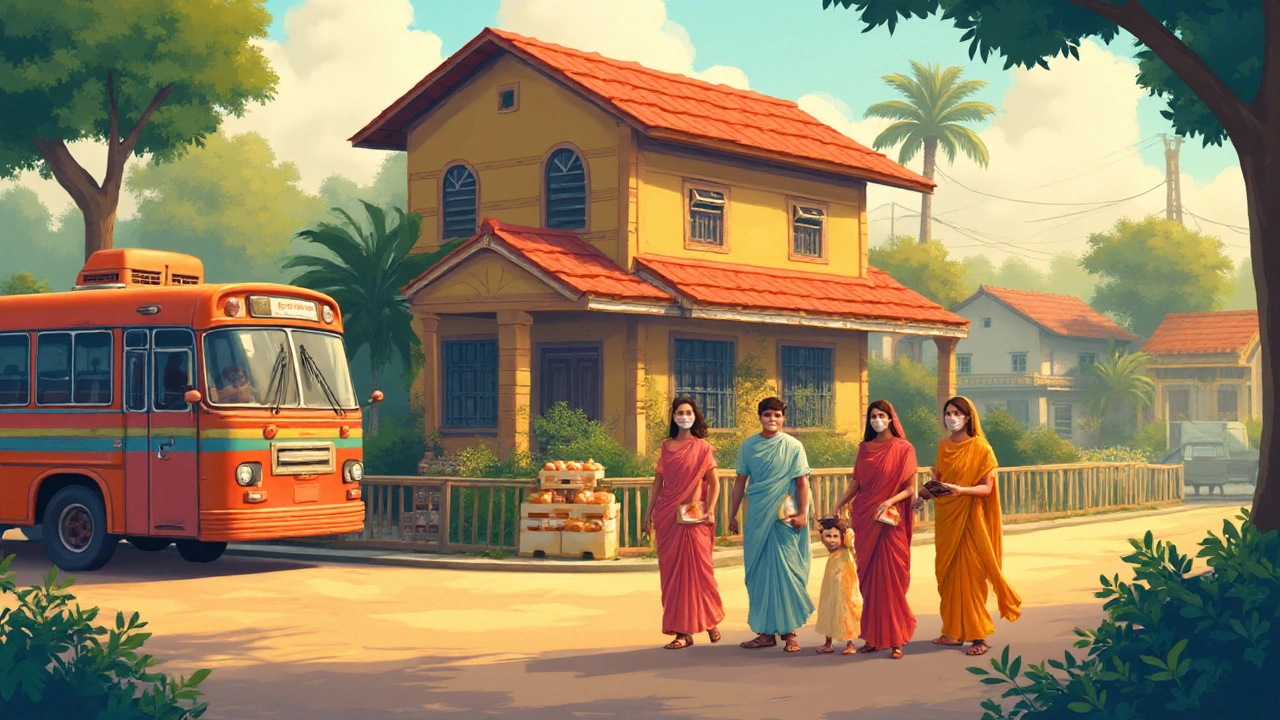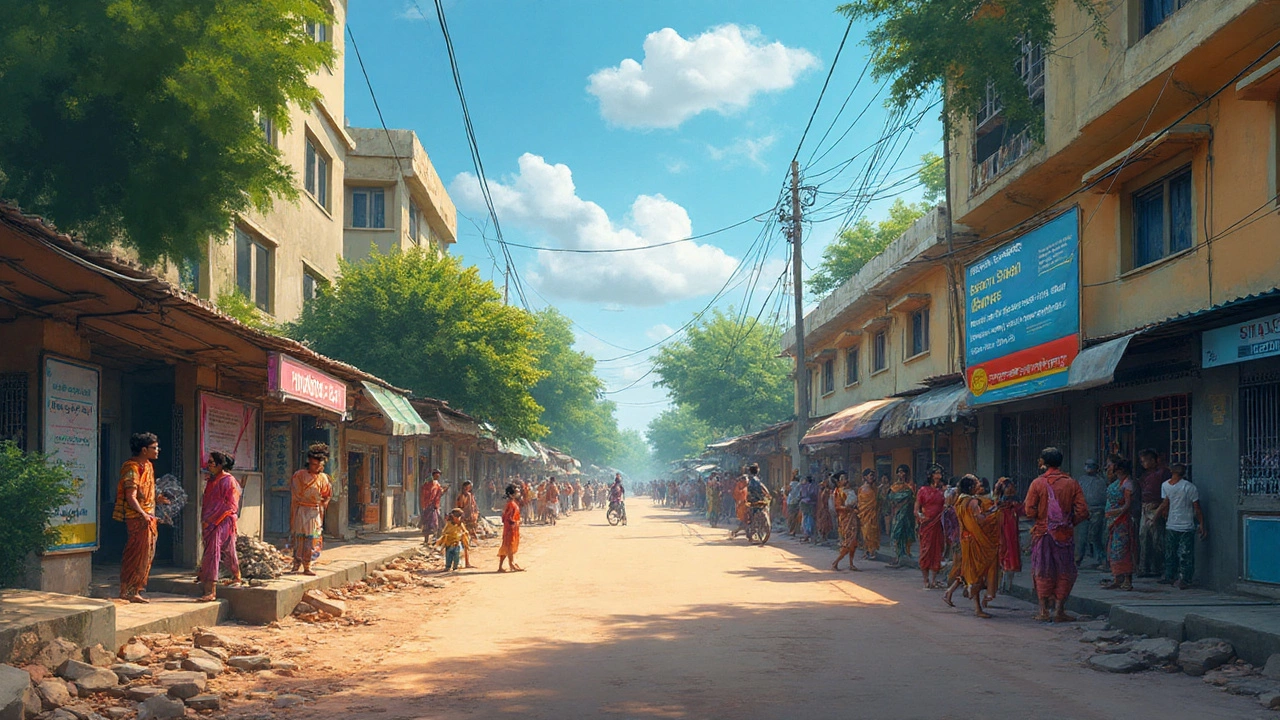
Imagine this: You're struggling to make ends meet, and every small challenge feels like a mountain. But if you had to choose, would you rather scrape by in rainy Seattle or sunny Austin? Being poor is tough anywhere, but it’s a fact—some states make poverty a little less punishing than others. Most people don’t realize just how wildly different daily life can look for low-income folks depending on where they call home. Let’s pull back the curtain and talk specifics: support systems, healthcare, housing, and how much that cheap burger really costs you when your wallet is light.
How States Support Their Struggling Residents
States don’t just look different on a postcard—how they help their poorest is even more unique. There are places where you don’t have to jump through hoops to get food stamps or Medicaid, and then there are places that seem determined to make it as tough as possible. Minnesota, Massachusetts, and Vermont are regularly praised for their friendly safety nets. In 2025, Minnesota still leads in SNAP access, free or heavily subsidized school lunches, and—don't laugh—more libraries per person than any other state. Compare that to Mississippi, which limped in last in 2024’s U.S. News poverty policy index, still struggling with limited outreach and clunky bureaucracy.
Take the Temporary Assistance for Needy Families (TANF) program. In California, families receive as much as $1,100 a month; just across the border in Arizona, the same program delivers about $278. Similar programs for low-income renters are just as uneven. Massachusetts keeps its public housing waitlists short and offers cash help for first-time renters, while Georgia’s process famously takes years in some cities. The difference isn’t small change—it’s the margin between having a home and couch-surfing with friends.
But what if you’re a single mom, juggling two jobs and barely keeping up with childcare costs? New York stands out, not just for its famous city skyline but also for its broad network of child care subsidies, after-school programs, and even free legal clinics. And Vermont? It offers extra transportation vouchers, because buses don’t always go where the jobs are in rural areas. The message is clear: Where you’re poor matters.
Healthcare Access: A Life-or-Death Difference
Try getting sick when you’re broke—that’s when you learn just how good (or brutal) your state really is. Medicaid expansion by state was the hottest fight of the last decade, and it’s still not universal. Oregon and Connecticut took the plunge early, opening the door to “Medicaid for All” up to 138% of the federal poverty line. The result? People there are far less likely to skip doctor visits when money runs dry.
Best example? Massachusetts again. In 2023, 98.1% of its residents were insured, the highest in the country. Compare that with Texas, where almost 18% of people under 65 are uninsured, the highest of any state. In Texas, an uninsured single mom might go months without seeing a doctor, because even urgent care is out of reach. In places like Vermont or Minnesota, state-funded clinics mean you at least get to see someone before things escalate. According to a 2024 CDC survey, uninsured adults were three times more likely to avoid needed care because of cost. That gap matters if you’re a low-income diabetic, kid with asthma, or just someone needing glasses to drive to work.
And don't ignore mental health. California invested $1.5 billion in community mental health services in 2024, opening up more clinics in poor neighborhoods. In the Deep South or parts of Appalachia, mental healthcare for the poor still feels like a lottery—if you find an opening, you’re lucky. The takeaway? Blue states and some well-funded purple ones have stepped up. Red states have consistently lagged, making poverty a lot scarier there.

The Real Cost of Cheap Living: Food, Shelter, Getting Around
“Move somewhere cheaper”—easier said than done. Sure, cost of living plays a huge part, but cheap rent often means fewer jobs, more crime, or broken-down schools. Check Idaho’s average rent for a one-bedroom ($894 in 2025, according to Zillow), then look at Miami’s—an eye-watering $2,178. Now factor in job availability and transportation: Idaho’s cities have tiny bus networks; Miami is car-dependent, meaning poor folks shell out more for basic commutes.
Food deserts are real in states like Alabama and Louisiana, where folks may trek miles to find a store selling fresh produce. In contrast, Michigan and Oregon have poured millions into neighborhood groceries, mobile markets, and free school breakfast programs. Rideshare subsidies, discounted bus passes, and “last mile” bike loans are real in Seattle and Portland, rare everywhere else. Washington’s 2024 poverty task force even found that transit access could cut monthly costs for the poor by 10%—sometimes more than rent help does.
Here’s where people get tripped up. Yes, rents may be lower in Arkansas, but energy costs are higher, and healthcare is harder to reach. Big cities like New York or Boston will eat you alive rent-wise, but the minimum wage is $16 and $15, respectively, with strong tenant protections. Small states like Vermont or Rhode Island offer more personalized services and less red tape but fewer jobs overall. If you’re poor, “cheap” does not always mean “better.” It means trading one set of problems for another.
Check out this quick state-by-state cost-and-benefit comparison—
| State | Medicaid Expansion? | Avg. 1-Bed Rent (2025) | Minimum Wage (2025) | Childcare Support |
|---|---|---|---|---|
| Minnesota | Yes | $1,041 | $15.50 | Strong |
| Mississippi | No | $732 | $7.25 | Weak |
| Massachusetts | Yes | $2,112 | $16.00 | Strong |
| Texas | No | $1,412 | $7.25 | Medium |
| Oregon | Yes | $1,212 | $14.20 | Strong |
Quality of Life: Beyond the Dollar Signs
Surviving isn’t thriving. Some states boost quality of life for low-income people in real ways—a neighborhood park instead of empty lots, supportive housing instead of crowded shelters, community health clinics on bus lines. Vermont and Oregon set a high bar for this: Free public transportation in many small cities, state-supported rec centers, ongoing education tuition waivers, and snow removal for disabled residents. These sound like luxuries, but they’re game changers when you’re scraping by.
One thing people always ask: Does community make a difference? You bet. Fixing a flat tire or running out of money for groceries feels less terrifying when your neighborhood has food pantries, strong nonprofits, and neighbors who check in. States with active anti-poverty coalitions—think Colorado, Illinois, and Washington—rank higher in reported life satisfaction among poor families. A 2024 Gallup poll revealed that low-income folks in these states feel less isolation and more hope than in high-poverty states with weaker social bonds.
Weather even plays a part. Harsh winters cost more—think heating bills, winter clothes, canceled shifts for low-wage jobs. States like California, with its mild climate, keep costs lower for basics. But natural disasters take a bite: Wildfires, hurricanes, and floods tend to hit poorer neighborhoods hardest, stretching thin safety nets to breaking point.
There’s also the dignity factor. In some progressive cities—Seattle, Minneapolis, Burlington—low-income housing blends seamlessly with neighborhoods. In other places, poverty means living in literal “poor zones” far from jobs, schools, and social life, making the uphill climb even steeper.

So, Where Does Being Poor Hurt the Least?
People want a single “best” answer, but real life is messy. If forced to choose, Minnesota, Massachusetts, and Vermont check the most boxes: Great healthcare, solid public transport, generous benefits, and strong job programs. California and New York work if you can hack the expensive rents, thanks to high minimum wages and creative programs that help with everything from school uniforms to city bus passes.
But remember, what works for one person might not for another. Got a chronic condition? Best stick to states with gold-star healthcare. Solo parent? Look for preschool help and after-school care. Disabled and on SSI? Check accessible transit and rent help. Don’t overlook the smaller states: Rhode Island, Maine, and Oregon run tight, friendly programs with less red tape than their oversized neighbors.
The wild card is always local politics. One governor, one election, and your safety net might shrink overnight. So savvy folks keep an eye on state trends, not just today’s perks. As The Center on Budget and Policy Priorities’ Liz Schott puts it:
“The safety net is built in statehouses, not in D.C. If you want to understand poverty, look at local action, not just federal rules.”
Here’s a tip: Before you pack up and move, dig deep—call local food banks, check housing waitlists, and talk to people already living there. Every state lists its benefits online, and websites like Benefits.gov or state social service portals update rules every year. There’s no “magic” state, but there are places where pulling yourself up is simply less punishing. If you’re going to be poor in America, at least be somewhere that sounds like help—not a hassle—is only a phone call away.